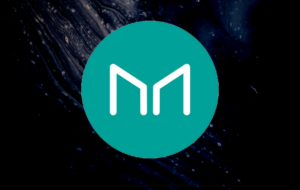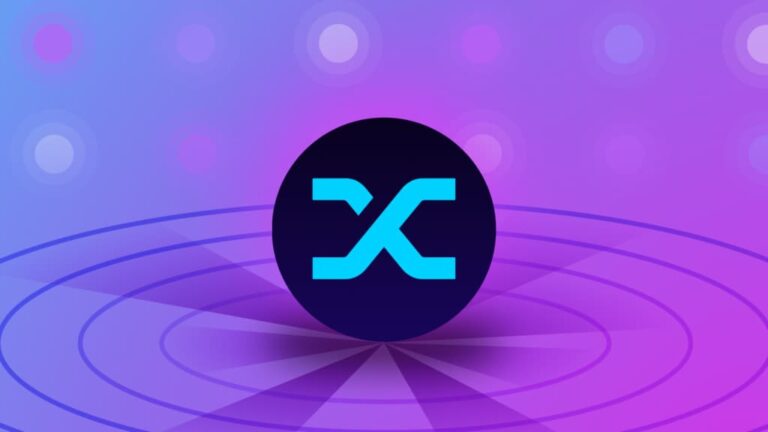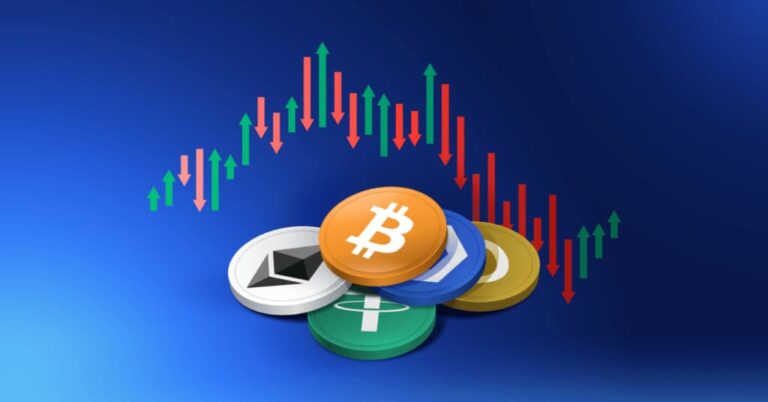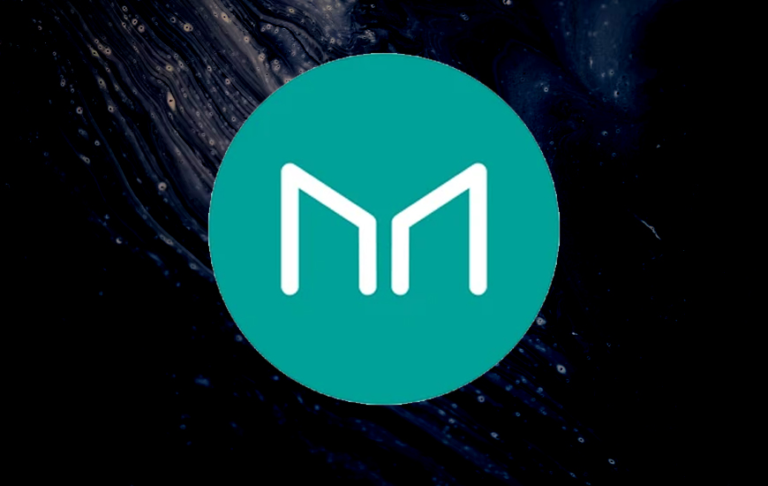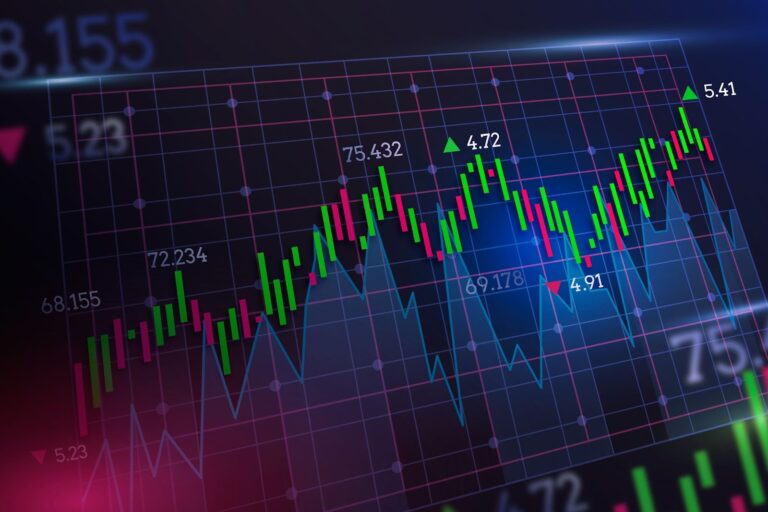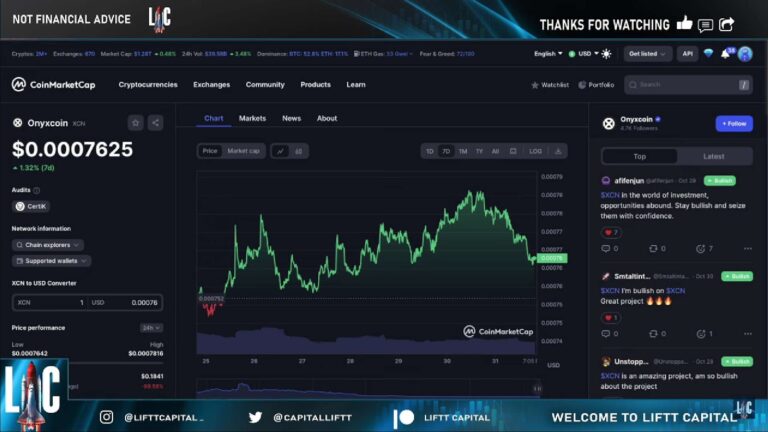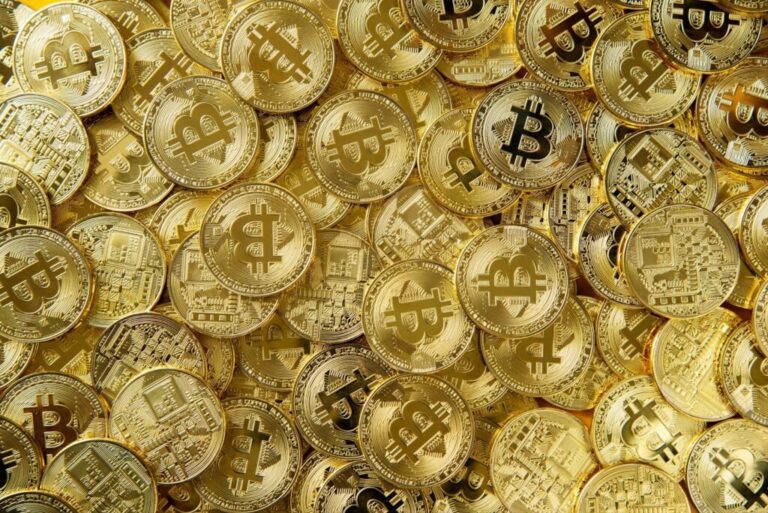In the ever-evolving landscape of blockchain technology and cryptocurrencies, tools and platforms that offer transparency and insight into blockchain networks have become invaluable. Among these, Etherscan stands as a cornerstone resource for anyone involved in the Ethereum ecosystem. But what exactly is Etherscan, and what role does it play in the world of decentralized finance and blockchain technology? In this article, we’ll delve into the intricacies of Etherscan, exploring its origins, functionality, and the crucial role it plays in monitoring, analyzing, and understanding the Ethereum blockchain. Whether you’re a seasoned crypto enthusiast or just starting your journey into the world of blockchain, this comprehensive guide will provide you with a clear understanding of Etherscan’s significance and its impact on the decentralized digital frontier.
The Appeal of Etherscan: Unveiling Ethereum’s Digital Realm
Etherscan, a remarkable standout amidst the vast realm of blockchain technology, has solidly positioned itself as the premier Ethereum blockchain explorer. What precisely endears Etherscan to the hearts of cryptocurrency aficionados, traders, and developers? Let’s embark on a more profound exploration of this digital wonder to unveil its alluring characteristics and capabilities.
1. Seamless Exploration of Ethereum’s Inner Workings
Etherscan’s popularity stems from its impeccable user experience and its unparalleled ability to offer a transparent window into the intricate mechanics of the Ethereum network. But what exactly can you achieve through this versatile platform?
- Real-time Network Monitoring: Etherscan empowers users with the ability to monitor the Ethereum network in real-time. This means you can stay up-to-date with the latest happenings, from transactions and contract interactions to block confirmations;
- Comprehensive Blockchain Analytics: Beyond the basics, Etherscan offers advanced blockchain analytics tools. Dive into historical data, track trends, and gain valuable insights into the Ethereum ecosystem’s evolution;
- Token Activity Insights: Etherscan doesn’t just stop at Ethereum; it extends its reach to Ethereum-based tokens as well. Get a comprehensive overview of token movements, transfers, and smart contract interactions, making it an invaluable resource for traders and investors.
2. An Educational Gateway to Blockchain Understanding
Etherscan goes beyond being a mere tool for tracking transactions. It’s a priceless resource for anyone seeking to understand the underlying principles of blockchain technology. Here’s how it helps bridge the knowledge gap:
- Blockchain Transparency: Etherscan’s user-friendly interface allows users, regardless of their technical background, to explore the blockchain’s transparency. Understand how transactions work, how data is stored, and how smart contracts execute;
- Spotting Suspicious Activity: Etherscan can be your ally in the quest to spot unusual or suspicious blockchain activity. Keep an eye out for red flags, such as sudden and significant token movements or project leaders selling their tokens en masse. This insight can help you make informed decisions and avoid potential pitfalls.
3. Empowering Decision-Making
Etherscan isn’t just for tech-savvy individuals or traders; it’s a tool that empowers anyone involved in the crypto space. Here’s how it can benefit you in your crypto journey:
- Investment Decisions: For investors, Etherscan is a treasure trove of information. Track the movement of tokens you’re interested in, identify whales influencing prices, and make informed investment decisions;
- Developers’ Playground: Developers can use Etherscan to gain insights into contract interactions, code verification, and debugging. It’s a playground for those building on the Ethereum platform.
4. Beyond Ethereum
While Etherscan is synonymous with Ethereum, it doesn’t limit itself to a single blockchain. It extends its services to Ethereum’s ever-expanding ecosystem of tokens, showcasing its commitment to keeping pace with the dynamic crypto landscape.
Exploring the World of Transaction Tracking on Etherscan
In the ever-evolving landscape of cryptocurrencies, the ability to master the art of transaction tracking is akin to wielding a powerful tool in your crypto arsenal. This skill not only empowers you to keep a close eye on the progress of your transactions but also grants you invaluable insights into the Ethereum network, including gas fees and confirmation details.
Unlocking the Secrets of Transaction Tracking
Diving into the heart of transaction tracking, let’s start with the key features that make this process possible and essential:
1. Unique Transaction Identifier – TXID
Every transaction on the Ethereum blockchain is assigned a digital fingerprint known as the Transaction Identifier, or TXID for short. Think of it as a one-of-a-kind serial number that distinguishes your transaction from the millions of others happening simultaneously on the network.
2. The TXID Structure
A TXID isn’t just any random set of characters; it’s a complex cryptographic hash, ensuring both security and uniqueness. This alphanumeric string serves as your transaction’s digital DNA, making it impossible for two transactions to share the same TXID. An example of a TXID might look like this:
0x3349ea4144aed83291f87b3904b02f8f1e76c3b5bfed0d95a000fafddaed01bc
Mastering Transaction Tracking on Etherscan
Now, let’s delve into the steps that will help you harness the power of Etherscan for transaction tracking:
1. Locate Your TXID
The first step is to find the TXID of the specific transaction you want to track. This information is typically available in the transaction history section of your cryptocurrency wallet or exchange platform.
2. Enter the Etherscan Universe
To access Etherscan’s treasure trove of blockchain data, navigate to their website. Etherscan is a specialized blockchain explorer tailored to the Ethereum network, offering a comprehensive view of transaction activities.
3. The TXID Gateway
At the heart of Etherscan’s functionality is its search bar, where the magic happens. Carefully input the TXID into this space, taking extra care to ensure precision. Even the slightest error in typing can lead to inaccurate or no results.
4. Illuminating Transaction Insights
Once you’ve submitted the TXID, Etherscan will unveil a detailed dossier of the transaction you seek. This dossier includes crucial information such as:
- Transaction Status: Discover whether your transaction is pending, successful, or has encountered any hiccups along the way;
- Block Confirmations: Gain insights into the number of confirmations your transaction has received, a vital indicator of its security and finality;
- Transaction Fees (Gas Fees): Understand the cost of your transaction in terms of gas fees, helping you assess the economic implications of your Ethereum activities;
- Wallet Addresses: Identify the parties involved in the transaction through their wallet addresses.
5. Real-Time Vigilance
Etherscan takes you beyond static snapshots of your transactions. It provides real-time updates, allowing you to monitor your transaction’s journey through the confirmation process. This real-time visibility is especially useful when you’re dealing with time-sensitive transactions or volatile market conditions.
Additional Tips and Insights
- Understanding Gas Fees: Gas fees fluctuate based on network congestion. Tracking these fees can help you understand the best times to transact for lower costs;
- Transaction Status: The status section is crucial. If a transaction is stuck as ‘pending’ for a long time, it might indicate issues like low gas fees or network congestion;
- Safety and Privacy: While TXIDs are public, they don’t directly reveal the owner’s identity. However, it’s important to be cautious about sharing transaction details, as they can sometimes be traced back to individuals;
- Using Etherscan’s Advanced Features: Etherscan also offers more advanced tools, such as tracking smart contract interactions and token transfers, beneficial for more experienced users.
By following these guidelines, users can effectively navigate the world of Ethereum transactions, enhancing their understanding and control over their cryptocurrency dealings.
Transaction Hash: The Unique Identifier
In the world of cryptocurrency transactions, the Transaction Hash, often referred to as TXID, stands as the digital fingerprint that uniquely identifies a particular transaction. It is the key to tracking and verifying the flow of digital assets on the blockchain. Let’s delve deeper into this essential concept:
- Unique Identification: Each transaction on the blockchain has a distinct Transaction Hash, making it impossible to confuse one transaction with another. This ensures transparency and accountability in the digital realm;
- Transaction Validation: When you initiate a cryptocurrency transfer or any action on the blockchain, the network generates a Transaction Hash to record it. Miners and nodes use this hash to validate the transaction’s legitimacy;
- Traceability: With the Transaction Hash in hand, you can trace the journey of your digital assets. This is particularly useful when you want to verify the status of a transaction or its inclusion in a block.
Status: The Fate of Your Transaction
The Status of your cryptocurrency transaction is like a suspenseful chapter in a digital novel. It reveals whether your transaction is currently in progress, has met a disappointing end, or achieved its goal of success. Understanding the Status is crucial for managing your crypto activities effectively:
- In Progress: This status indicates that your transaction is currently being processed by the network. It’s akin to watching a live stream of your funds moving through the blockchain. Be patient; blockchain transactions may take some time to confirm;
- Failed: When your transaction encounters an issue and cannot proceed, it is marked as “Failed.” This could be due to various reasons, such as insufficient funds, an incorrect recipient address, or network congestion;
- Successful: The most delightful outcome for any crypto enthusiast! A “Successful” status means your transaction has been confirmed and added to a block on the blockchain. Your digital assets have reached their destination securely.
Block: The Building Blocks of Blockchain
Blocks are the fundamental units of the blockchain. They serve as containers for multiple transactions, creating an indelible record of the cryptocurrency’s journey. Understanding the concept of Blocks is essential for any blockchain enthusiast:
- Block Number: Each block on the blockchain is assigned a unique number. This number signifies the chronological order in which the block was added to the chain. It’s like a page number in a ledger, helping you track the history of transactions;
- Block Confirmations: The number of Block Confirmations indicates how many additional blocks have been added to the blockchain since your transaction was included. A higher number of confirmations adds an extra layer of security, making it increasingly challenging for malicious actors to alter your transaction.
Timestamp: The Moment in Digital Time
In the world of blockchain, time is recorded with precision. The Timestamp of a transaction provides you with the exact date and time when your crypto action took place. This timestamp serves several essential functions:
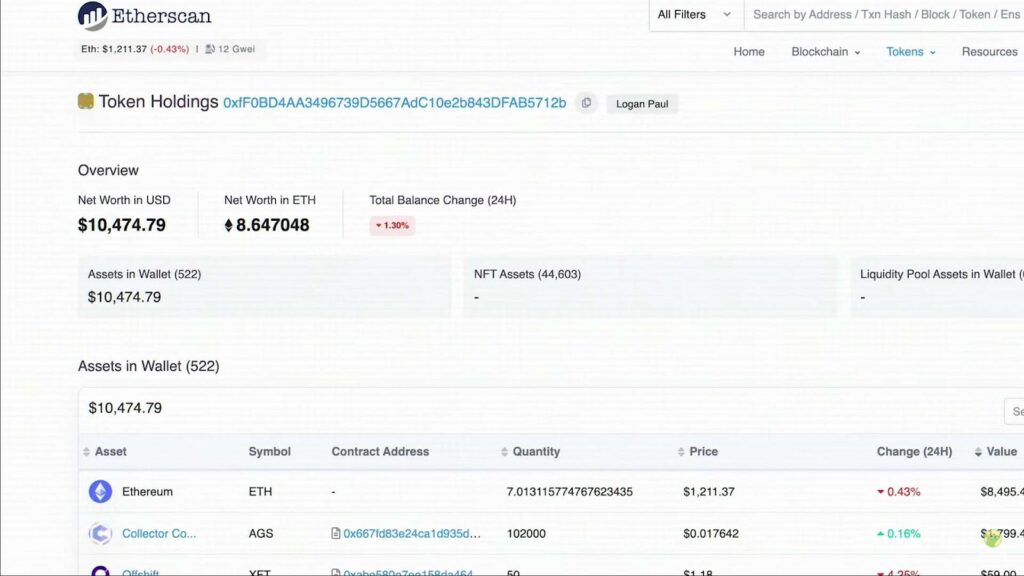
- Historical Record: Timestamps create an immutable historical record of transactions, ensuring transparency and accountability;
- Chronological Order: When reviewing your transaction history, timestamps help you understand the sequence of events, making it easier to track your crypto activities.
From and To: The Origin and Destination
Every cryptocurrency transaction has a story to tell, and it begins with the “From” and “To” addresses. These addresses are the protagonists in the narrative of digital asset transfers:
- From: This is the wallet address from which the transaction originated. It signifies the sender of the cryptocurrency. It’s like the return address on a physical package, indicating where the crypto came from;
- To: The “To” address represents the destination of the transaction. It can be a wallet address or a smart contract. This address tells you where the cryptocurrency is headed, completing the story of its journey.
Value: The Worth of Your Transaction
Understanding the “Value” of a cryptocurrency transaction is crucial for assessing its significance and impact. It’s more than just a number; it’s the monetary worth of your digital assets changing hands:
- Monetary Assessment: The “Value” field quantifies the amount of cryptocurrency involved in the transaction. Whether you’re sending, receiving, or exchanging crypto, this information helps you gauge the financial impact;
- Currency Conversion: You can use the “Value” to assess the transaction’s equivalent in your preferred fiat currency, providing a real-world perspective on your crypto activities.
Transaction Fee and Gas Price: The Cost of Participation
Navigating the realm of blockchain involvement carries its own price tag, one encompassing Transaction Fees and Gas Prices that are linked to transaction execution. Allow me to delve into these vital components for you:
- Transaction Fee: When you engage the blockchain network to carry out your transaction, you incur a fee as a form of compensation for the miners who dedicate their resources to validate and incorporate your transaction into the blockchain;
- Gas Price: Gas is the fuel that powers blockchain transactions. The Gas Price represents the cost per unit of gas at the time of your transaction. It’s typically displayed in both Ether (the native cryptocurrency of Ethereum) and Gwei (a smaller unit of Ether). Understanding Gas Prices helps you make informed decisions about transaction speed and cost.
Conclusion
Whether you’re an investor in a promising dapp, a diligent wallet monitor, or an adventurer in the world of blockchain-based games, Etherscan serves as your trusted companion. It offers a seamless, browser-based service that empowers you to explore, learn, and engage with the Ethereum ecosystem like never before.
In conclusion, Etherscan is not just a tool; it’s a gateway to the boundless possibilities of Ethereum. With its wealth of features, transparency, and user-friendly interface, it stands as an indispensable resource for both newcomers and seasoned Ethereum enthusiasts alike. Explore, analyze, and experience Ethereum with Etherscan at your side.

